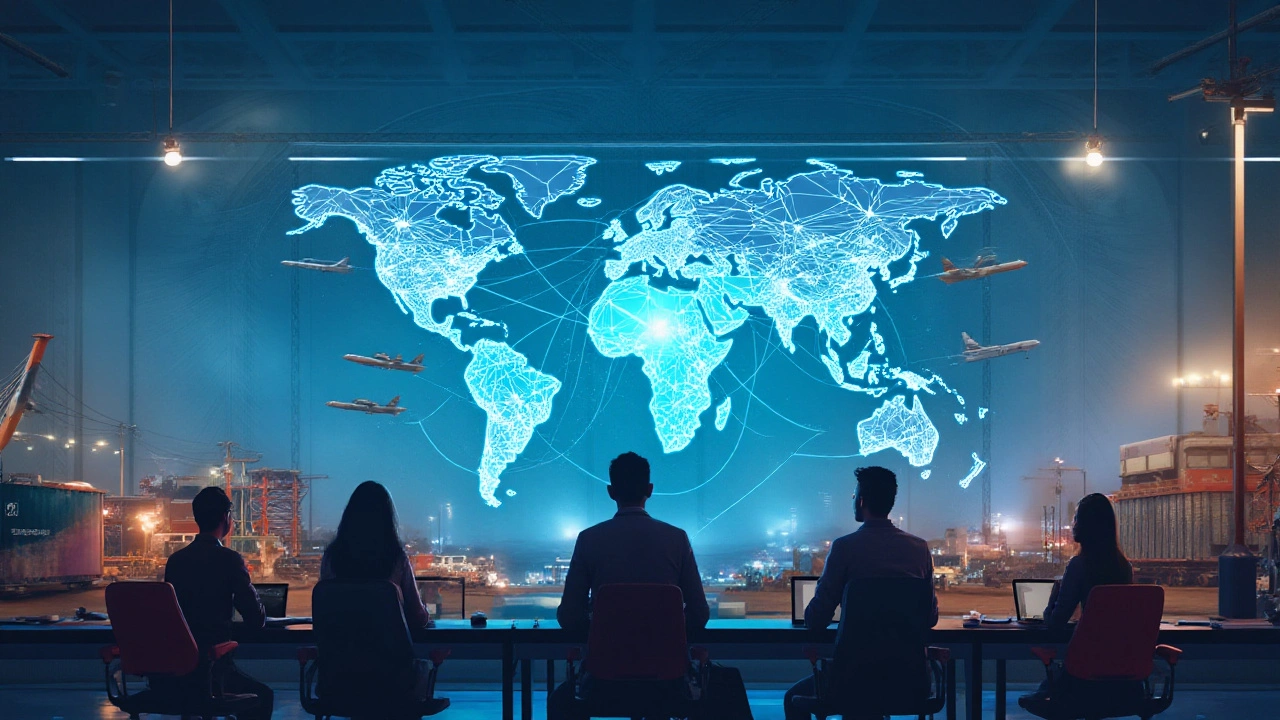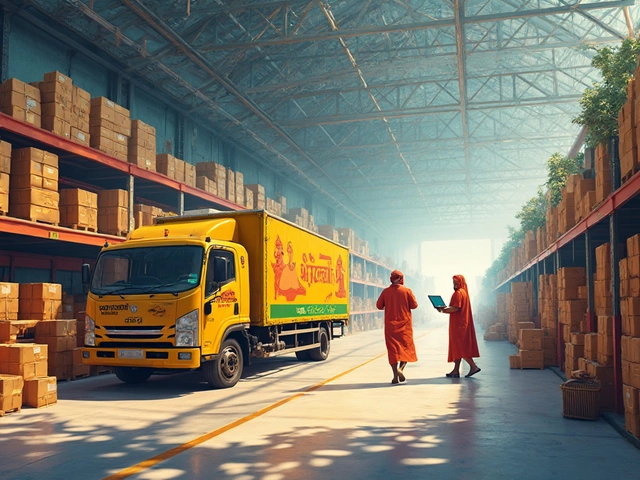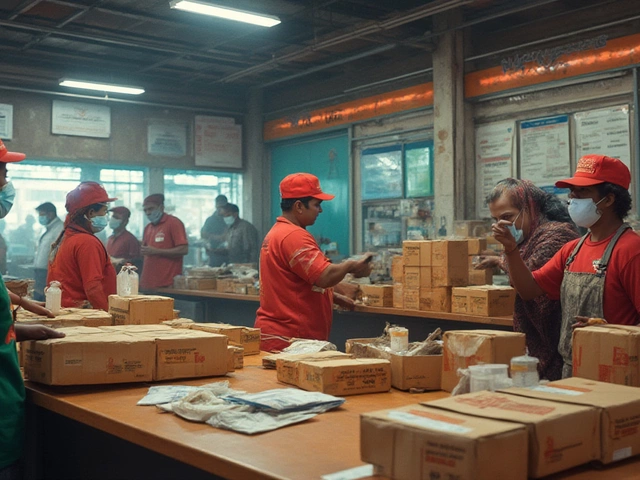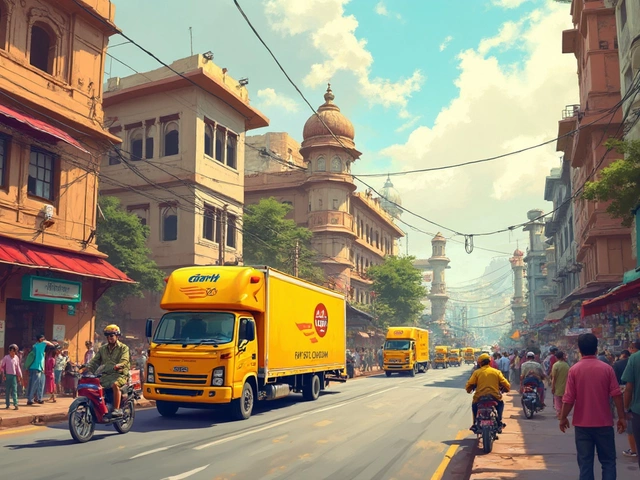Imagine a world without logistics. Goods would never reach their destinations, and the bustling engine of commerce would grind to a halt. But what exactly do the unsung heroes of logistics do to keep this dynamic machine running smoothly? It's not as simple as moving boxes from A to B; logistics is an intricate field that involves a variety of roles, each crucial in its own right.
From transportation managers crafting optimal delivery routes to warehousing specialists ensuring items are correctly stored and inventoried, logistics professionals must adapt and solve complex problems daily. In today's fast-paced, tech-driven market, those in logistics are not just surviving—they are thriving by pioneering efficient pathways amidst growing demands. Let's dive into the fascinating world of logistics and unravel the roles that shape this fundamental part of our everyday lives.
- Overview of Logistics Roles
- Transportation Management
- Warehousing and Inventory Control
- E-commerce and Emerging Trends
Overview of Logistics Roles
The world of logistics companies is a bustling hub of activity, where various roles come together to create seamless operations that power global trade. Each function within logistics holds its own set of responsibilities, requiring a unique skill set, ingenuity, and precision.
Logistics Coordinator
The logistics coordinator is often found at the heart of operations, responsible for scheduling and managing the flow of goods from manufacturers to consumers. These individuals liaise with suppliers, negotiate with carriers, and make sure that the supply chain operates efficiently. Their work can involve a high degree of multitasking as they track deliveries, respond to unforeseen challenges such as delays or shortages, and keep clients informed about their orders.
Transportation Manager
Transportation managers oversee the movement of goods, ensuring that they arrive at their destination promptly and cost-effectively. They analyze transportation routes and utilize logistics software to optimize paths while also managing the transportation budget to minimize costs. With the growing concern for sustainability, these managers are now evolving strategies to reduce carbon footprints by choosing eco-friendly transportation options.
Warehouse Operations Manager
Efficient storage and handling are critical, and this is where the warehouse operations manager steps in. They manage the day-to-day operations of warehousing facilities, ensuring that goods are securely stored, efficiently retrieved, and shipped correctly. Their role includes overseeing inventory systems, deploying staff effectively, and implementing safety protocols. With technology integrating into warehousing solutions, these managers might also have to be savvy with automation and robotics.
Inventory Analyst
Inventory analysts monitor stock levels to ensure that there are no discrepancies between what’s available and what’s needed. They use complex data analysis to forecast future demand and adjust inventory levels accordingly. Proper inventory management is crucial for avoiding excess stock and stockouts, both of which can be costly for businesses.
Customer Service Manager
No logistics operation is complete without effective customer service, and that's where customer service managers excel. They handle all client inquiries, offer solutions for any delivery issues, and maintain the company's reputation by ensuring customer satisfaction.
These varied roles illustrate just how dynamic and integral logistics work is in facilitating global commerce. As technology and e-commerce continue to evolve, so too will the demands—and opportunities—for those working in logistics.
Transportation Management
Transportation management is the backbone of effective logistics companies, ensuring that goods move seamlessly from point of origin to their final destination. At its core, this field revolves around optimizing the various modes of transportation—from sea, land, to air—while balancing costs, time, and reliability.
Key Responsibilities and Strategies
Transportation managers focus on route optimization, choosing the best paths that minimize fuel usage and delivery times. This involves employing advanced algorithms and predictive analytics to navigate complex global networks. Furthermore, they coordinate between shippers, carriers, and retailers to ensure all parties are synchronized, reducing bottlenecks and improving efficiency.
One strategic tool in their arsenal is the Transportation Management System (TMS). It provides a centralized overview of fleet operations, shipment tracking, and the ability to make real-time adjustments. According to a study by ARC Advisory Group, over 65% of logistics companies globally are now using TMS to streamline their operations.
Types of Transportation Modes
- Trucking: Dominating land transport, trucking accounts for over 70% of the total freight moved in countries like the United States. It's favored for its door-to-door service and flexibility.
- Railways: A cost-efficient method for bulk goods over long distances, railways are a key player in intermodal operations, complementing ships and trucks.
- Shipping: Ocean freight is the powerhouse for international trade, handling around 90% of global trade volume. It's suitable for bulky, non-urgent goods.
- Air Freight: For speed and reliability, air transport is unmatched, albeit at a higher cost. It is ideal for perishable goods or high-value items requiring quick delivery.
Challenges and Innovations
The world of transportation management is not without its challenges. Rising fuel costs, stringent environmental regulations, and unpredictable geopolitical tensions create a landscape that requires constant vigilance and adaptation. However, the industry is witnessing exciting innovations. Electric and autonomous vehicles are poised to revolutionize how goods are transported, promising reductions in emissions and human error.
Furthermore, the integration of blockchain technology offers enhanced security and transparency in tracking shipments. This technology provides an immutable ledger of transactions, ensuring data integrity and enhancing trust between all stakeholders.
Conclusion
Transportation management stands as a dynamic and vital aspect of the logistics industry, pushing boundaries and embracing innovations that shape how goods travel across the world. By optimizing resources and leveraging new technologies, logistics companies can navigate the complexities of a global market, ensuring that supply chains remain both robust and resilient.

Warehousing and Inventory Control
In the heart of the logistic operations, warehousing and inventory control stand as critical components that ensure the efficient functioning of supply chains. The main goal of warehousing is not just to store goods but to facilitate their easy retrieval and distribution as demand arises. This requires a delicate balance—goods must be stored efficiently yet remain accessible, ensuring that neither space nor time is wasted.
Roles and Responsibilities
Warehouse managers and inventory specialists are the masterminds behind this balance. They are tasked with organizing storage systems that maximize space and speed up picking processes. These professionals use a variety of tools and technologies, such as automated storage and retrieval systems (AS/RS) and warehouse management systems (WMS), to optimize operations and minimize errors.
Types of Warehousing
Depending on the needs of the logistics operation, different types of warehousing solutions are employed:
- Public Warehouses: Third-party warehouses offering storage services on a short-term or long-term basis.
- Private Warehouses: Owned by a company as part of its supply chain, catering specifically to its storage needs.
- Distribution Centers: Warehouses focused on the rapid distribution of goods rather than long-term storage.
Inventory Control Techniques
Efficient inventory control is essential to prevent overstocking and stockouts, which can both be costly for companies. Techniques such as Just-in-Time (JIT) inventory, which reduces the need for large inventories by aligning stock levels closely with production and demand schedules, have become increasingly popular.
Moreover, inventory specialists use technologies like RFID tags and barcoding, enabling real-time tracking of products through every stage of the supply chain. This not only improves accuracy but also provides data that can drive strategic decisions.
Impact of Technology
The rise of industry 4.0—characterized by the increased use of IoT (Internet of Things), AI, and robotics in warehousing—is reshaping inventory management. Automation ensures precision and speed while reducing reliance on traditional, labor-intensive methods. AI algorithms predict demand fluctuations and optimize stock levels, minimizing waste and enhancing profitability.
In an ever-evolving market landscape, effective warehousing and inventory control remain pivotal. For logistics companies, mastering these elements isn’t just an operational need but a sure way to gain competitive advantage. With continued technological advancements, the future of warehousing promises to be even more dynamic, efficient, and integral to the world of supply chain management.
E-commerce and Emerging Trends
In the landscape of logistics, the explosive growth of e-commerce has spurred a revolution. As consumers increasingly turn to online platforms for their shopping needs, the logistics industry has had to rapidly adapt to meet these new demands. This transformation involves not just the transport of goods, but a re-imagining of how efficiency and speed are achieved in the supply chain.
With more people shopping online, the role of logistics companies in optimizing transportation and warehousing is pivotal. The expectation for fast delivery, often within a day or two, is now the norm rather than the exception. This has led to the rise of advanced technological solutions and innovative practices that ensure goods move seamlessly from manufacturers to the front doors of customers.
Adoption of Technology
Technologies such as artificial intelligence, machine learning, and the Internet of Things (IoT) are becoming integral to logistics operations. AI is used to predict customer demand, enhance route efficiency, and manage inventory in real time. IoT enables the tracking of shipments globally, offering unprecedented transparency and allowing for quick responses to any disruptions in the supply chain.
Robotics in Warehousing
The use of robotics in warehousing is another trend redefining logistics. Robots are employed to pick and pack items, increasing speed while reducing the potential for human error. This not only improves accuracy but also allows human workers to focus on more complex tasks that require critical thinking and decision-making.
Omnichannel Logistics
The concept of omnichannel retailing has also changed logistics dynamics. Consumers expect to buy products online, pick them up in store, or have them shipped directly to their homes. This requires logistics companies to maintain a versatile and flexible infrastructure that can handle multiple types of order fulfillment.
Data-driven strategies are crucial here. Logistics professionals meticulously analyze consumer buying patterns, using these insights to optimize supply chains and predict future trends. This approach helps companies remain competitive and adapt to the ever-evolving market landscape.
In summary, the evolution of e-commerce has positioned logistics at the forefront of technological adoption and consumer satisfaction. By leveraging cutting-edge technologies and developing adaptive supply chain strategies, logistics companies are meeting the high expectations of modern-day consumers, transforming challenges into opportunities for innovation and growth.





